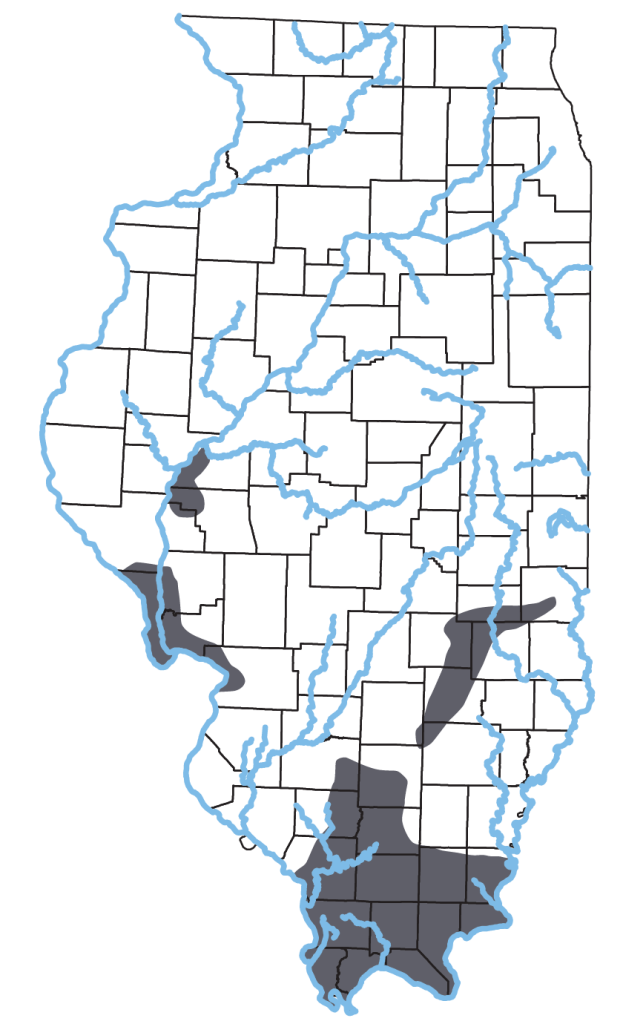Scincella lateralis (Say in James, 1823)
Key Characters: Smooth scales; short limbs; a small transparent membrane on the lower eyelid; no supranasal scales.
Similar Species: A distinctive species not easily confused.
Subspecies: None described.
Description: A small (up to 13 cm TL), slender copper to chocolate brown lizard with a darker brown dorsolateral stripe on each side. Belly white.
Habitat: Forest and forest edge.
Natural History: Mating takes place in the spring and eggs are laid in late June to July. Clutch size is normally 1-5 eggs and hatching takes place in August or September. Hatchlings average 4 cm TL. Prey includes insects, spiders, and earthworms. The main predators are snakes and small birds.
Status: Common, especially in extreme southern Illinois.
Etymology: Scincella – scincus (Greek) meaning ‘a kind of lizard’; lateralis – (Latin) for ‘of the side’
Original Description: Say, T. 1823. in Edwin James, Account of an expedition from Pittsburgh to the Rocky Mountains, performed in the years 1819 and ‘20 under the command of major Stephen H. Long, H.C. Peary, and I. Lea. Carey and Lea, Philadelphia. 2. 442 pp.
Type Specimen: Holotype, USNM 3152, collected by S.W. Woodhouse
Type Locality:“banks of the Mississippi River below Cape Girardeau, Missouri”
Original Name: Scincus lateralis Say, 1823
Nomenclatural History: Scincus unicolor Harlan, 1825 is a junior synonym. This name was also resurrected by Stejneger (Copeia 1934 (4):182) as a replacement name for Scincus lateralis based on his interpretation that Scincus lateralis was occupied by Thunberg’s Lacerta lateralis which was later moved to the genus Scincus by Daudin. Harper (Copeia 1942 (3):180) demonstrated that “the previous use of a specific or subspecific name in combination with the same generic name has relation only to the original designation of a species or subspecies described as new, not to combinations of names resulting from the reference of species or subspecies to some other genus than the one to which it was originally referred”. The species was transferred to several genera (Tiliqua, Lygosoma, Mocoa, Oligosoma, Leiolopisma before Mittleman (1950. Herpetologica 6(2):17-20) placed in it Scincella.


